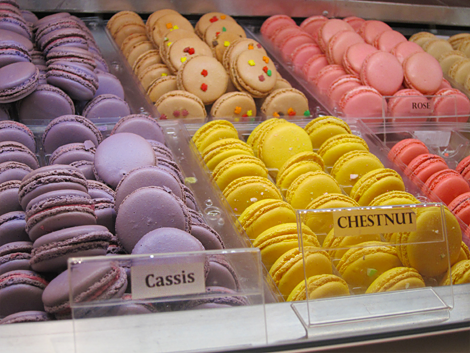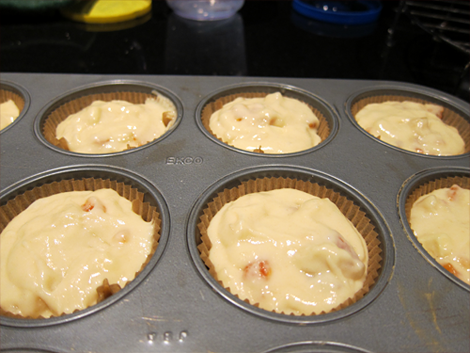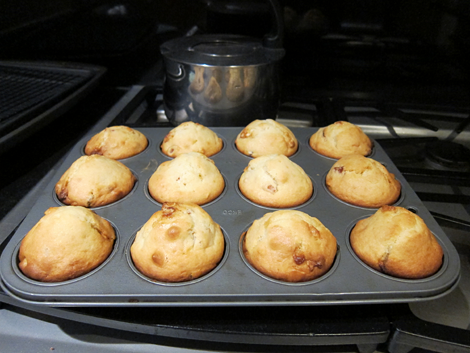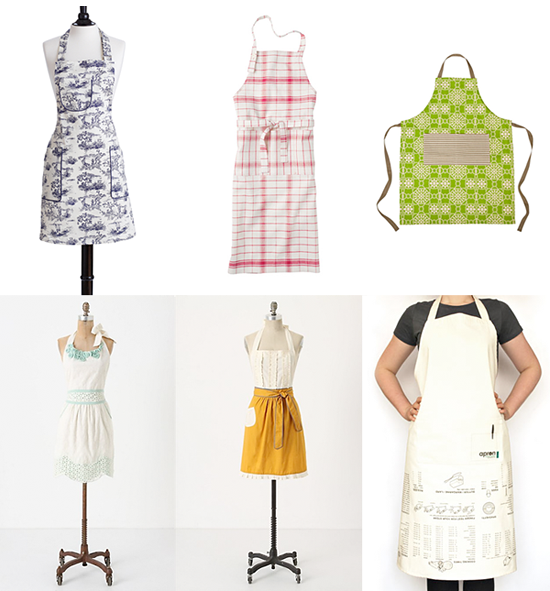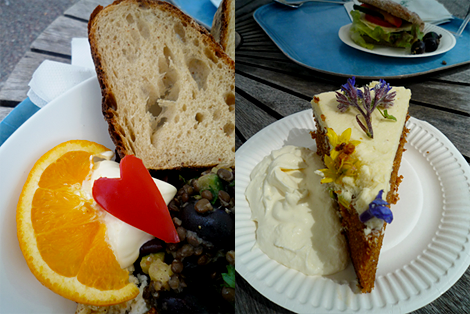Way back in February, when I got an interview request for an internship I’d applied for, something clicked, and I decided to start baking. When I told a friend of mine that I had gone from writing a response e-mail saying, “I’d love to come in for an interview!” to “I’m going to start baking!” she asked what the connection was. There wasn’t one, and I still can’t explain how or why that interview request e-mail served as motivation to start something new. (Actually, I had only read the e-mail, not yet responded to it, when my mind went, “Baking!” It was really was like that metaphorical light bulb going on in my head.)
In a way, I saw my decision to start baking and cooking more as a bit of a “reinvention” of myself, and I decided to continue the trend. I headed straight to the bookstore and browsed the cookbook section, determined to keep fighting the good fight (baking the good bake?). Overwhelmed by the cookbook selection, I turned around to food/travel section, where I picked up pastry chef and blogger David Lebovitz‘s The Sweet Life in Paris. While I like to travel, eat, and bake, I don’t see myself making that my profession or writing a book about it, but I was hoping I’d get some inspiration from someone who did. In the end, I found some delicious-looking recipes and got to (sort of) transport myself to Paris. But like Top Chef, it can be rather annoying reading about, or seeing, all these chocolates and cheeses and meals and not being able to taste them. Descriptions only go so far. Aah, if only Paris were just a free trip around the corner. The book is an enjoyable read, regardless of whether or not it did inspire me, and there are some very funny chapters. And, as I said, some must-try recipes.
I also thought I’d once again try “finding my inner artist” by taking a watercolor class. I took the same class last year while we were here (oh, hey, I’m in Arizona for the week!), and I ended up painting the same desert sunset scene. But I think I improved ever so slightly. During the session last year, I declared to myself that I wanted to buy a watercolor set when I got home and do some casual painting in my free time. That never happened, and here I am, one year later, out of college and figuring out what I want to do*, once again declaring that I want to buy a watercolor set when I get home. It’s both calming and a little stressful (I have to get those cactus arms just right!), but I do enjoy it, and I think it could be good for me.
Maybe I should just move to Arizona and paint this sunset every evening.
I doubt it would pay the bills, but at least it would be different! We don’t exactly get sunsets like these in New York.
All photos taken by Taking of Toast.




